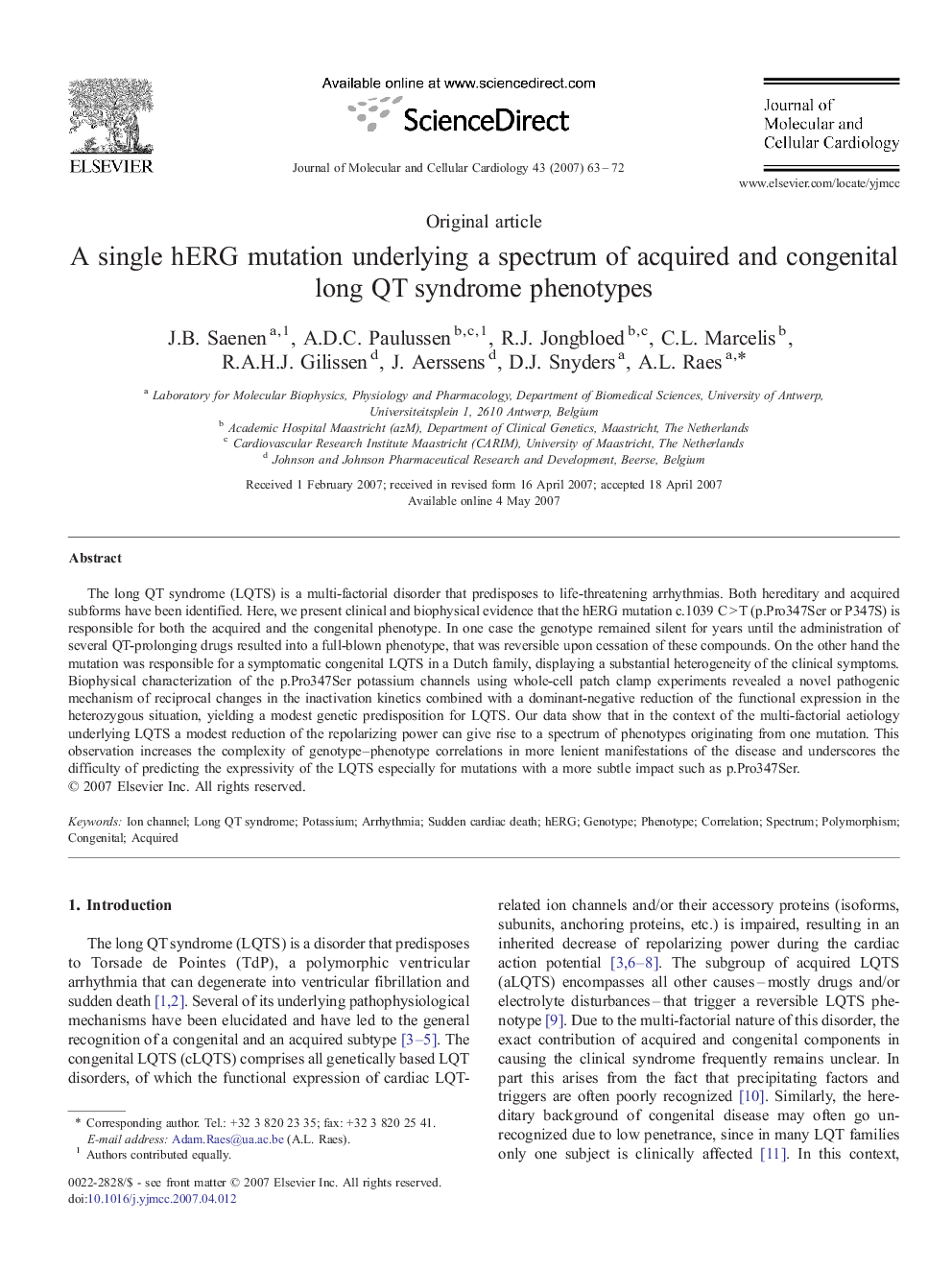| Article ID | Journal | Published Year | Pages | File Type |
|---|---|---|---|---|
| 2192089 | Journal of Molecular and Cellular Cardiology | 2007 | 10 Pages |
The long QT syndrome (LQTS) is a multi-factorial disorder that predisposes to life-threatening arrhythmias. Both hereditary and acquired subforms have been identified. Here, we present clinical and biophysical evidence that the hERG mutation c.1039 C > T (p.Pro347Ser or P347S) is responsible for both the acquired and the congenital phenotype. In one case the genotype remained silent for years until the administration of several QT-prolonging drugs resulted into a full-blown phenotype, that was reversible upon cessation of these compounds. On the other hand the mutation was responsible for a symptomatic congenital LQTS in a Dutch family, displaying a substantial heterogeneity of the clinical symptoms. Biophysical characterization of the p.Pro347Ser potassium channels using whole-cell patch clamp experiments revealed a novel pathogenic mechanism of reciprocal changes in the inactivation kinetics combined with a dominant-negative reduction of the functional expression in the heterozygous situation, yielding a modest genetic predisposition for LQTS. Our data show that in the context of the multi-factorial aetiology underlying LQTS a modest reduction of the repolarizing power can give rise to a spectrum of phenotypes originating from one mutation. This observation increases the complexity of genotype–phenotype correlations in more lenient manifestations of the disease and underscores the difficulty of predicting the expressivity of the LQTS especially for mutations with a more subtle impact such as p.Pro347Ser.
